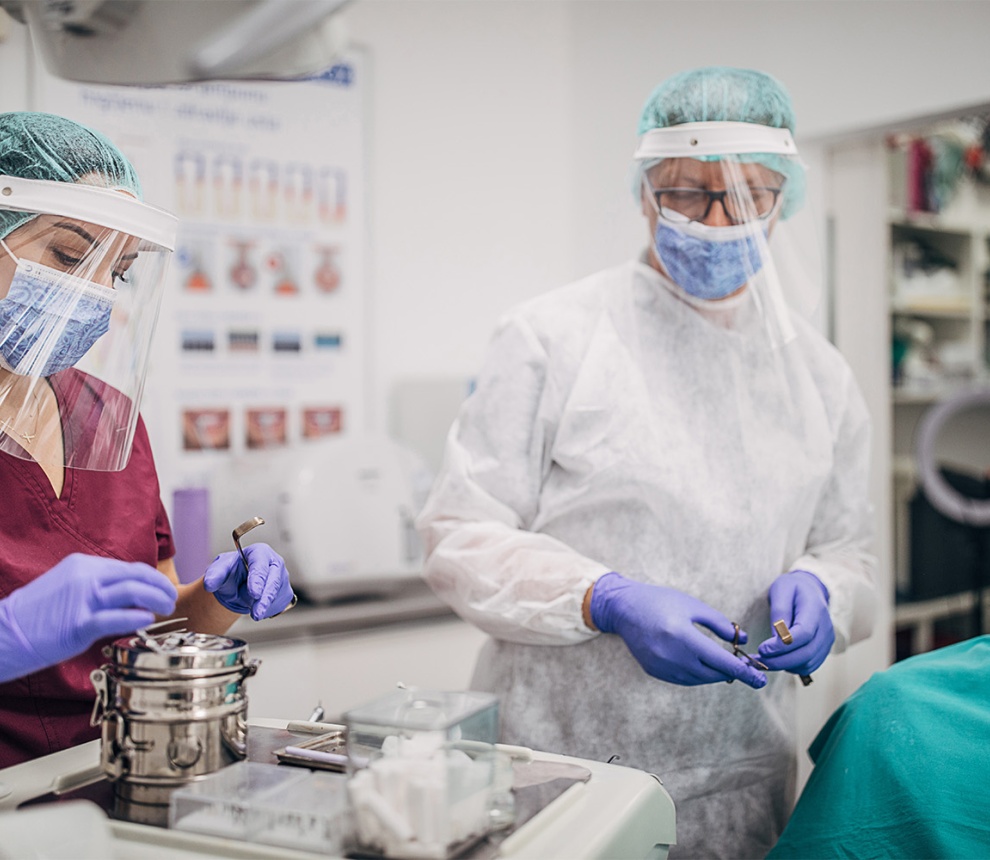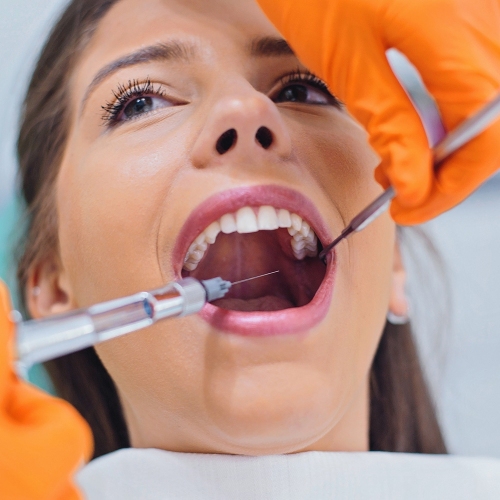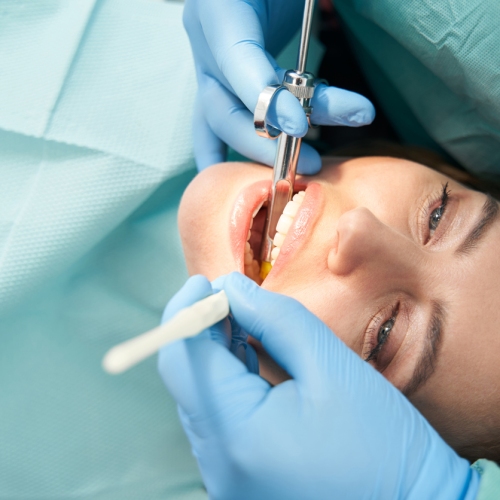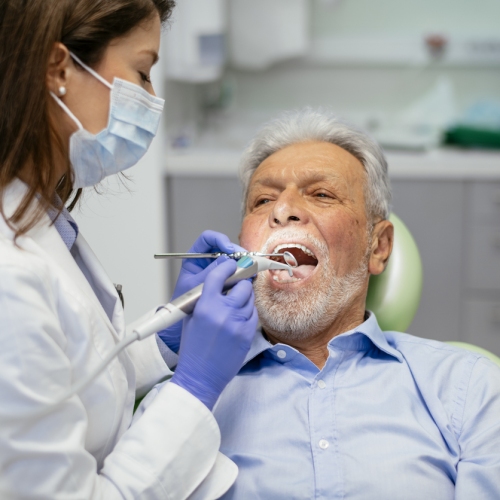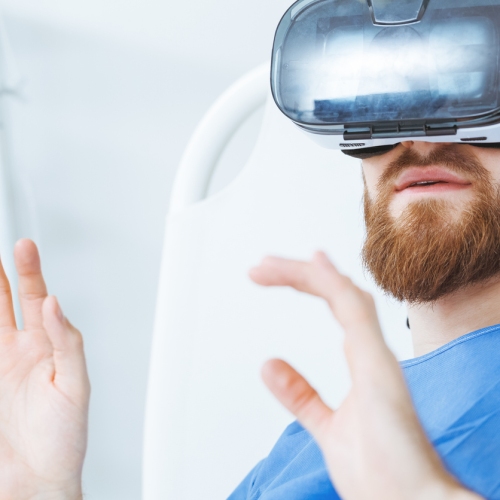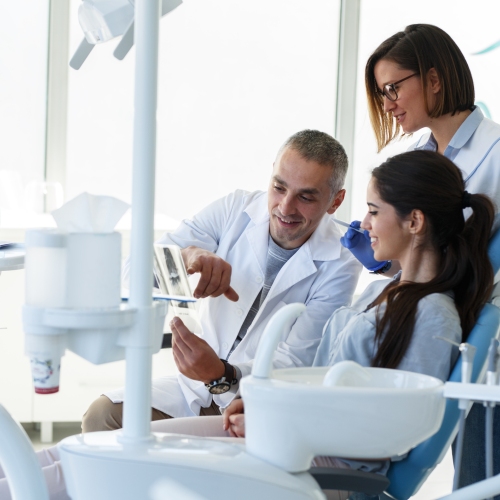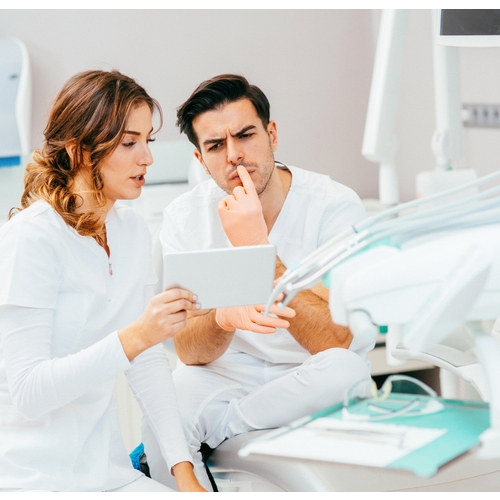MINIMIZING RISK OF EXPOSURE
- dry mouth
- altered taste (dysgeusia)
- pseudomembranous fungal structure
- ulceration
- change in tongue sensation
- oral cavity swelling
- muscle pain during chewing
- herpetic lesions (herpes sores)
The exposure to contagious diseases is minimised with the emergence of teledentistry—a subunit of telemedicine[2]. Even before the COVID-19 pandemic materialised, teledentistry met the standards of “social distancing.” In the past, it has proven beneficial for consulting, dental screening, diagnosing, monitoring, and proposing treatment plans to individuals in elderly care facilities and prisons[3]. Although teledentistry cannot replace some in-person interventions, it allows the dentist to identify which procedures require the use of aerosol generating methods for intervention. In this way, dentists can refer patients to clinics or hospitals with infrastructure that minimises the risk of exposure to aerosolised viral particles[4].
Virtual environments also allow for remote triaging of suspected positive individuals and eliminate exposure between parties. A method that involves categorising patients by health status can help limit treatment to patients that have urgent dental needs amidst a crisis. Three categories were adopted by several dental practices in order to prioritise only the most present needs during pandemic uncertainty—"confirmed for COVID-19”, “suspected for COVID-19”, and “apparently healthy”[5]. Separate operating rooms and waiting rooms were assigned to each category to minimize risk of transmission.
Although many developing nations do not have the infrastructure in place to reach dental patients through teledentistry, the growth of teledentistry in places where it does exist, and investment in establishing the required infrastructure for implementing the practice could help prepare dentists for future crises and save many lives.
A TOLL ON CURRENT AND FUTURE DENTAL PRACTITIONERS
To help dental practitioners and students cope with the stressors of a health crisis, several institutions are offering services. Mental health counseling and financial assistance are just some of these services[4]. Additionally, and alongside these institutions, professional societies provide free virtual seminars and courses to disseminate knowledge to affected dental professionals and promote collaboration[4].
The end is not yet in sight for the current pandemic. In fact, the WHO has speculated that it may become just another endemic virus and never go away[6]. Continuous research can yield innovative and sustainable solutions to keep the field safe. The hope is that the current pandemic has increased the technical literacy of patients and staff, so that they may remain at the forefront of information, and implement, and abide by, the latest safety protocols. Support for mental health services will also ensure the health and resilience of current and future dental professionals through these stressful crises.
REFERENCES:
- https://pubmed.ncbi.nlm.nih.gov/33368888/
- https://pubmed.ncbi.nlm.nih.gov/32593116/
- https://www.sciencedirect.com/science/article/abs/pii/S1871402120301983
- https://www.ncbi.nlm.nih.gov/pmc/articles/PMC7300727/
- https://pubmed.ncbi.nlm.nih.gov/32950037/
- https://www.who.int/emergencies/diseases/novel-coronavirus-2019?gclid=CjwKCAjwyIKJBhBPEiwAu7zll8VVpBWal-DZhuWZUWYud3BKL4NW4v1OtYKXepKJIY7-hUiYQA9FexoCy5IQAvD_BwE
